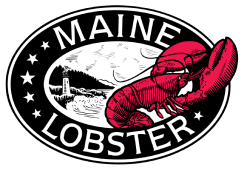It is fair to say that there has been tension over the years between fishermen and scientists. It is just as fair to say that when fishermen and scientists collaborate, they are both the wiser for the experience. I watched this while going sternman several years ago for a ventless trap survey, and it was there I witnessed a rich dialogue between the on-board scientist and the long-time fisherman participating in the survey. Curt Brown, the marine biologist for Ready Seafood, spends his days in this rich and productive space between science and industry.
Ready Seafood is one of the largest seafood wholesalers in Maine, shipping hundreds of thousands of pounds of lobster around the world every week. Five years ago, the company made a commitment to science, and Brown, who has a Masters in Marine Biology and Marine Policy from the School of Marine Sciences at the University of Maine, stepped in to fill that role. Curt grew up as a fishermen, and still hauls 500 traps in addition to his myriad of other duties. He spent a decade at the Gulf of Maine Research Institute prior to joining Ready. “It’s so unique, what we have here, how we grew up lobstering, and I want to see it continue for the next generation and the generation after that,” Curt says. The passion for this subject is evident in his tone. “At Ready, our science program has two primary areas of focus: quality and sustainability.”
The commitment to science has led to a number of rich industry-science partnerships between Ready and University of Maine; University of New England, St. Joseph’s College and most recently, Santa Monica Seafood. “We’re looking at lobster settlement to be able to more readily understand the sustainability of our industry,” Brown notes, and “on the quality side, really understanding how to improve handling practices to reduce shrinkage for both the live side and the processed side.”
This week, he told me, he’d be spending a day in Augusta on the Climate Council created by Governor Mills, a day fishing if he got a weather window, and a day at the University of Maine’s Darling Center coming up with a game plan to pick up the settlement collectors. Also reviewing marketing materials and a new website. “What I enjoy most is the fact that on any given day I don’t know what’s coming at me, and I always need to be able to think on my feet and be nimble in my problem solving. The whole purpose of what I do is to promote collaboration between industry and science to improve the overall value of our resource, and that’s an ever-evolving endeavor.”
I ask him what keeps up at night, and he doesn’t hesitate: “My 2-year-old and my 4-year-old. Other than that, my days are pretty packed and I sleep soundly.”
